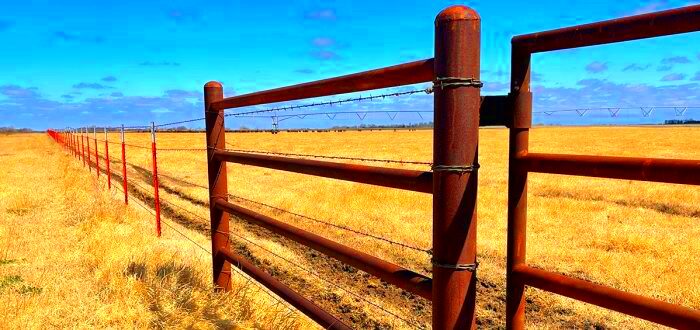Fence Laws in Kansas Explained
Fence laws in Kansas play a vital role in maintaining property rights and ensuring harmonious relationships between neighbors. Whether you’re planning to build a new fence or have questions about existing ones, understanding these laws is essential. This guide aims to clarify various aspects of fence laws, helping you navigate the rules effectively.
Understanding Property Lines and Boundaries

Knowing your property lines is crucial before installing a fence. Here are some key points to consider:
- Property Surveys: Conducting a property survey can help define your boundaries accurately. Hiring a licensed surveyor is often the best approach.
- Deed Restrictions: Check your property deed for any restrictions or requirements related to fencing.
- Local Ordinances: Familiarize yourself with local ordinances that may affect how close a fence can be built to the property line.
Remember, building a fence too close to your neighbor’s property line can lead to disputes, so it’s always better to confirm your boundaries before proceeding.
Types of Fences Allowed in Kansas
Kansas allows various types of fences, and each type serves different purposes. Here’s a rundown of common fence types:
| Type of Fence | Common Use | Material |
|---|---|---|
| Wood Fence | Privacy and aesthetics | Pine, cedar, or redwood |
| Chain Link Fence | Security and visibility | Galvanized steel |
| Vinyl Fence | Durability and low maintenance | Polyvinyl chloride (PVC) |
| Electric Fence | Livestock containment | Wires and posts |
When selecting a fence, consider your needs, local regulations, and how the fence will affect your property and those around you. Always check local laws to ensure compliance with height and material restrictions.
Building and Installation Requirements for Fences
When building a fence in Kansas, there are specific requirements to keep in mind. These guidelines help ensure safety and compliance with local laws. Here’s what you need to know:
- Height Restrictions: Most cities have regulations on how tall a fence can be. Typically, front yard fences should not exceed 4 feet, while backyard fences can go up to 6 feet or more, depending on local laws.
- Materials: Ensure your chosen materials comply with local ordinances. For example, some areas may prohibit certain materials for aesthetic or safety reasons.
- Setback Requirements: Some municipalities require fences to be set back a specific distance from property lines. Make sure to verify these requirements before installation.
- Installation Guidelines: Proper installation is key to ensuring your fence is stable and meets local codes. This includes using the right post depth and securing the fence properly.
Taking these requirements into account can save you from potential disputes or fines down the road. Always consult your local zoning office for specific guidelines related to your area.
Neighbor Responsibilities and Rights Regarding Fences
Fences can sometimes lead to misunderstandings between neighbors, so it’s essential to know your responsibilities and rights. Here’s a breakdown:
- Shared Fences: If a fence is on or near the property line, both neighbors may be responsible for maintenance and repairs.
- Notification: It’s courteous to inform your neighbor before building a fence, especially if it might affect their property.
- Dispute Resolution: If disagreements arise, try to resolve them amicably. Consider discussing your plans and addressing any concerns they may have.
- Property Lines: Ensure your fence is entirely on your property to avoid potential disputes. If in doubt, consult a surveyor.
Maintaining open communication and understanding can help foster a good relationship with your neighbors while ensuring your fencing project runs smoothly.
Permits and Regulations for Fence Construction
Before embarking on your fence-building journey, it’s crucial to understand the permit requirements in Kansas. Here’s what you need to know:
- Building Permits: Many cities in Kansas require a building permit for fence installation, particularly for taller fences or those made from specific materials. Check with your local building department to find out if you need one.
- Application Process: The application process usually involves submitting a detailed plan that includes the fence’s height, materials, and location. You may also need to provide a survey of your property.
- Approval Time: Permit approval times can vary. Be prepared for possible delays, especially if additional information is requested.
- Inspections: Some localities require inspections during or after construction to ensure compliance with building codes.
Skipping the permit process can lead to fines or even having to take down your fence. Always check local regulations and secure the necessary permits before starting your project.
Resolving Fence Disputes in Kansas
Fence disputes are not uncommon among neighbors, but there are ways to resolve them peacefully. Understanding the process can save you time, stress, and potential legal fees. Here’s how to approach these disputes:
- Open Communication: The first step in resolving a fence dispute is to talk to your neighbor. Discuss your concerns and listen to theirs. Sometimes, a simple conversation can clear up misunderstandings.
- Documentation: Keep records of any agreements or conversations related to the fence. This documentation can be helpful if you need to escalate the issue.
- Mediation: If direct communication doesn’t work, consider involving a neutral third party, such as a mediator. Mediation can help both sides find a compromise without going to court.
- Legal Action: As a last resort, you may need to consider legal action. Consult with a local attorney who specializes in property law to understand your options and the potential costs involved.
By following these steps and maintaining open lines of communication, you can often resolve disputes without escalating them to legal battles. Remember, a good neighborly relationship is worth the effort!
Common Questions About Fence Laws in Kansas
Many people have questions about fence laws, especially if they are new to the area or planning a fence installation. Here are some frequently asked questions:
| Question | Answer |
|---|---|
| Do I need a permit to build a fence? | It depends on your local regulations. Check with your city or county building department. |
| What is the typical height limit for fences? | Front yard fences are usually limited to 4 feet, while backyards may allow up to 6 feet or more. |
| Who is responsible for maintaining a shared fence? | Typically, both neighbors share the responsibility for maintaining a fence that lies on or near the property line. |
| What should I do if my neighbor disputes my property line? | Consider getting a property survey to clarify boundaries and discuss the findings with your neighbor. |
These questions can help clarify common concerns and guide you through the process of building and maintaining your fence in Kansas.
Conclusion on Fence Laws in Kansas
Understanding fence laws in Kansas is essential for homeowners looking to build or maintain fences. By knowing your rights, responsibilities, and local regulations, you can ensure a smooth fencing process. Remember to communicate openly with your neighbors to prevent disputes, and don’t hesitate to seek help if conflicts arise. Always check with local authorities for specific guidelines and permit requirements to avoid legal issues. With the right information and a proactive approach, you can enjoy your fence while maintaining a good relationship with those around you.


